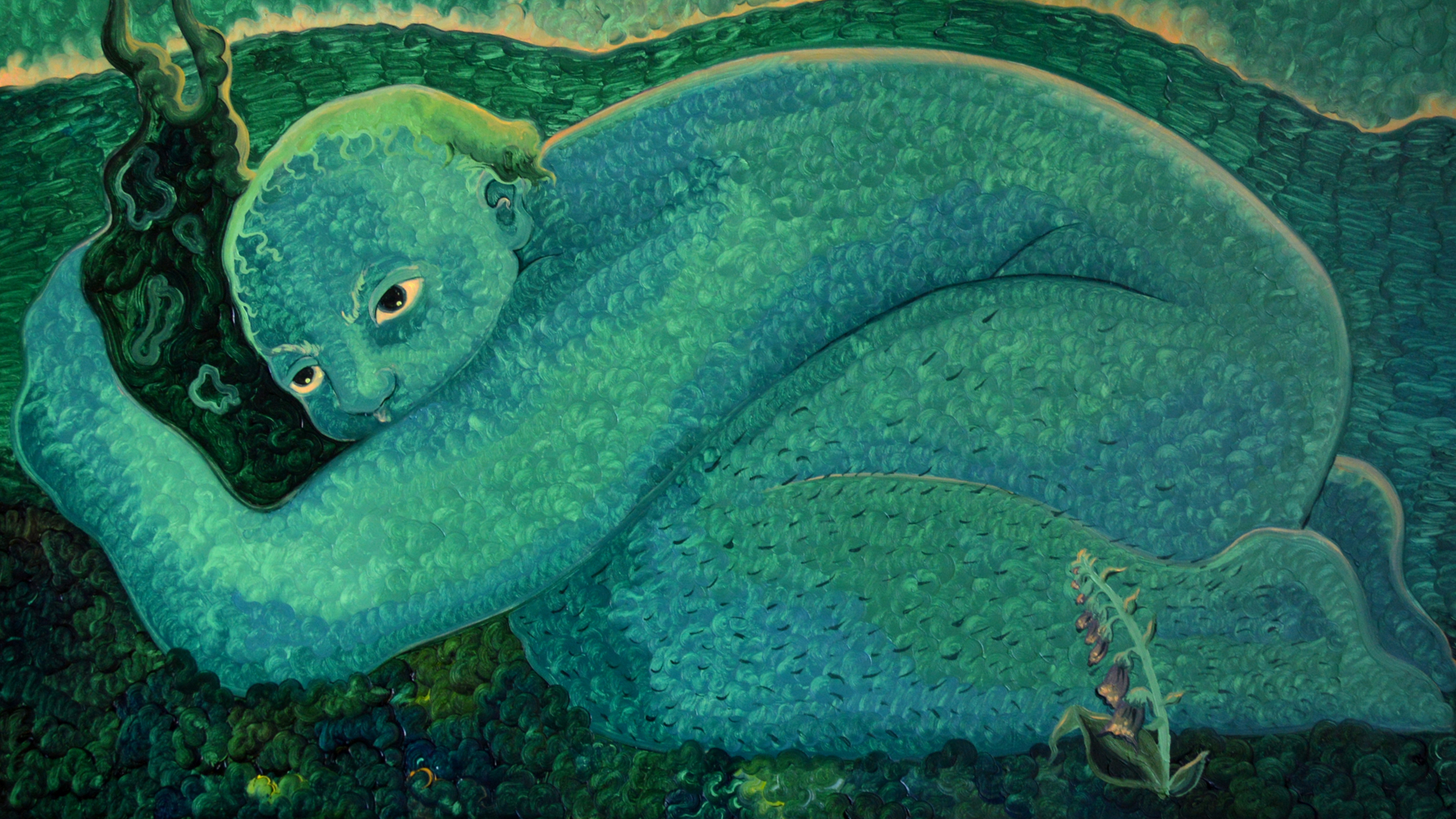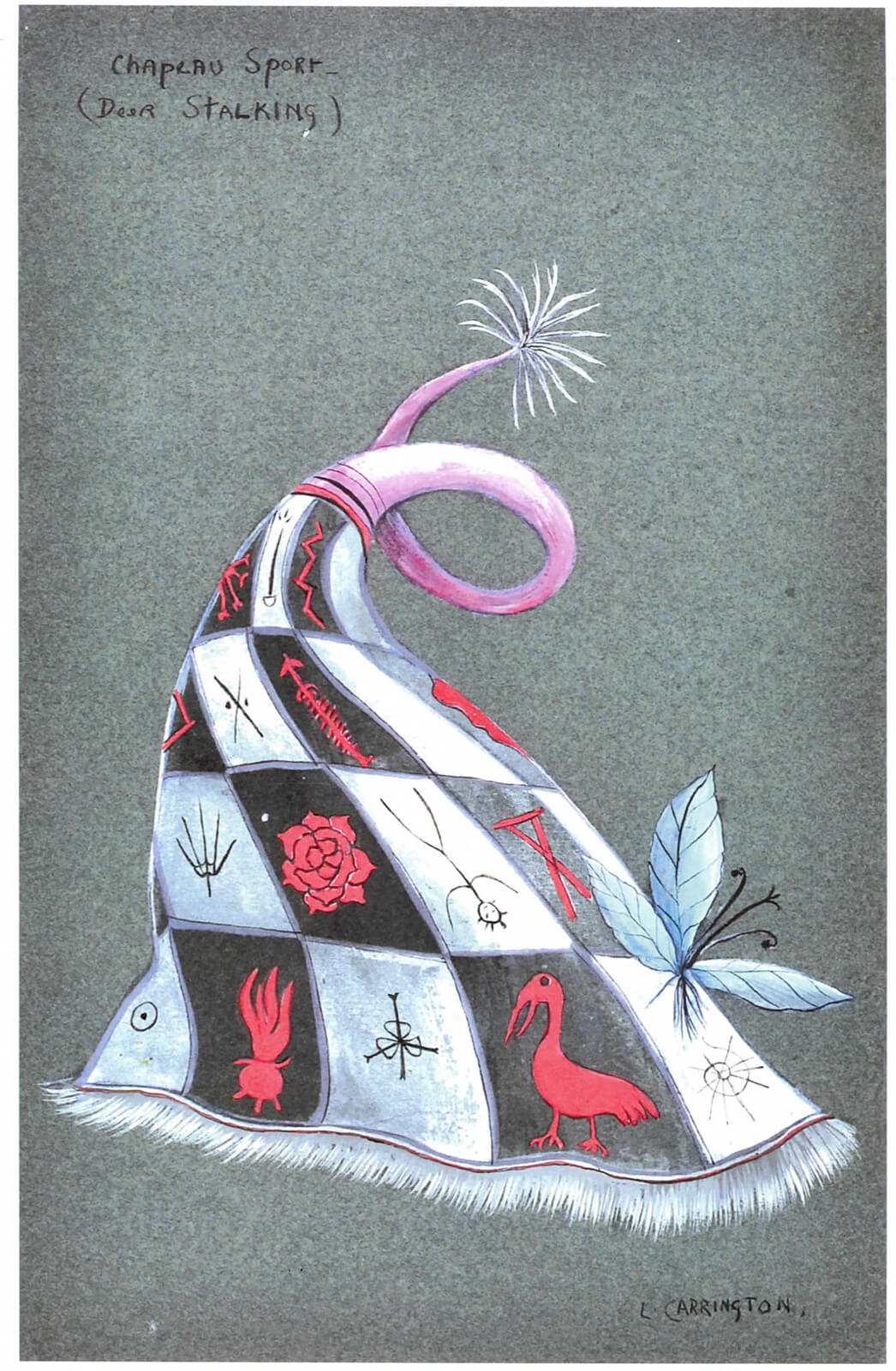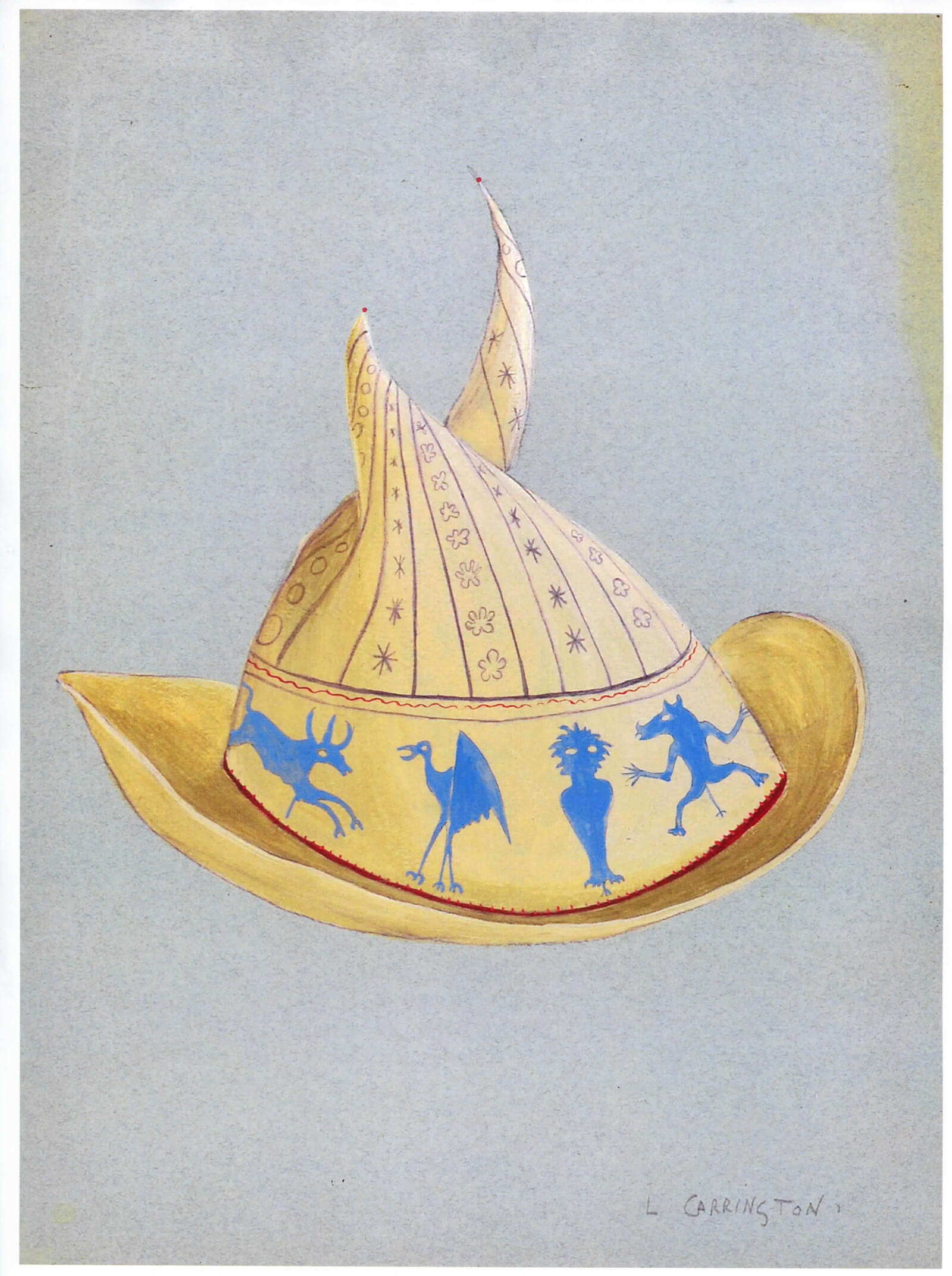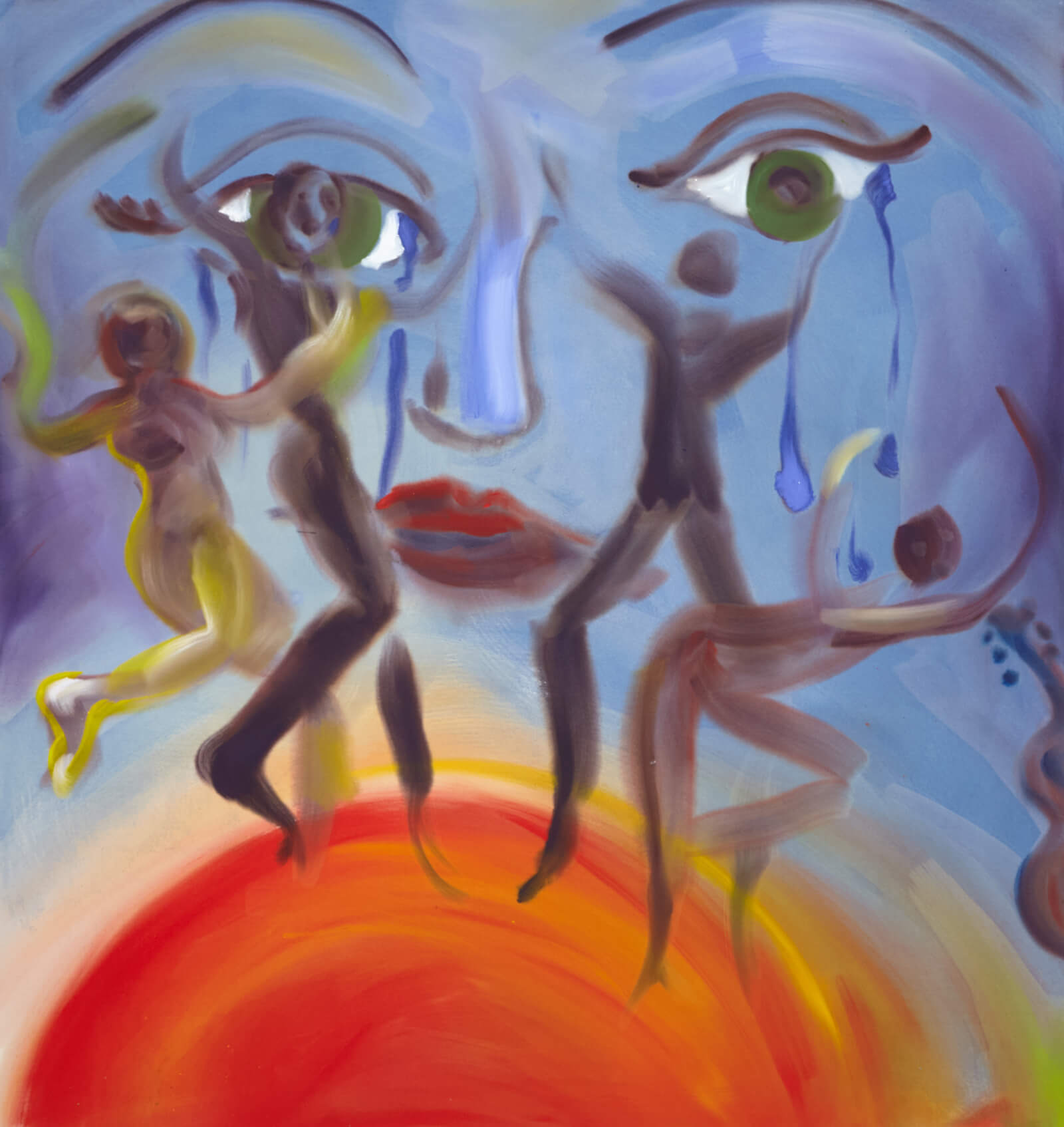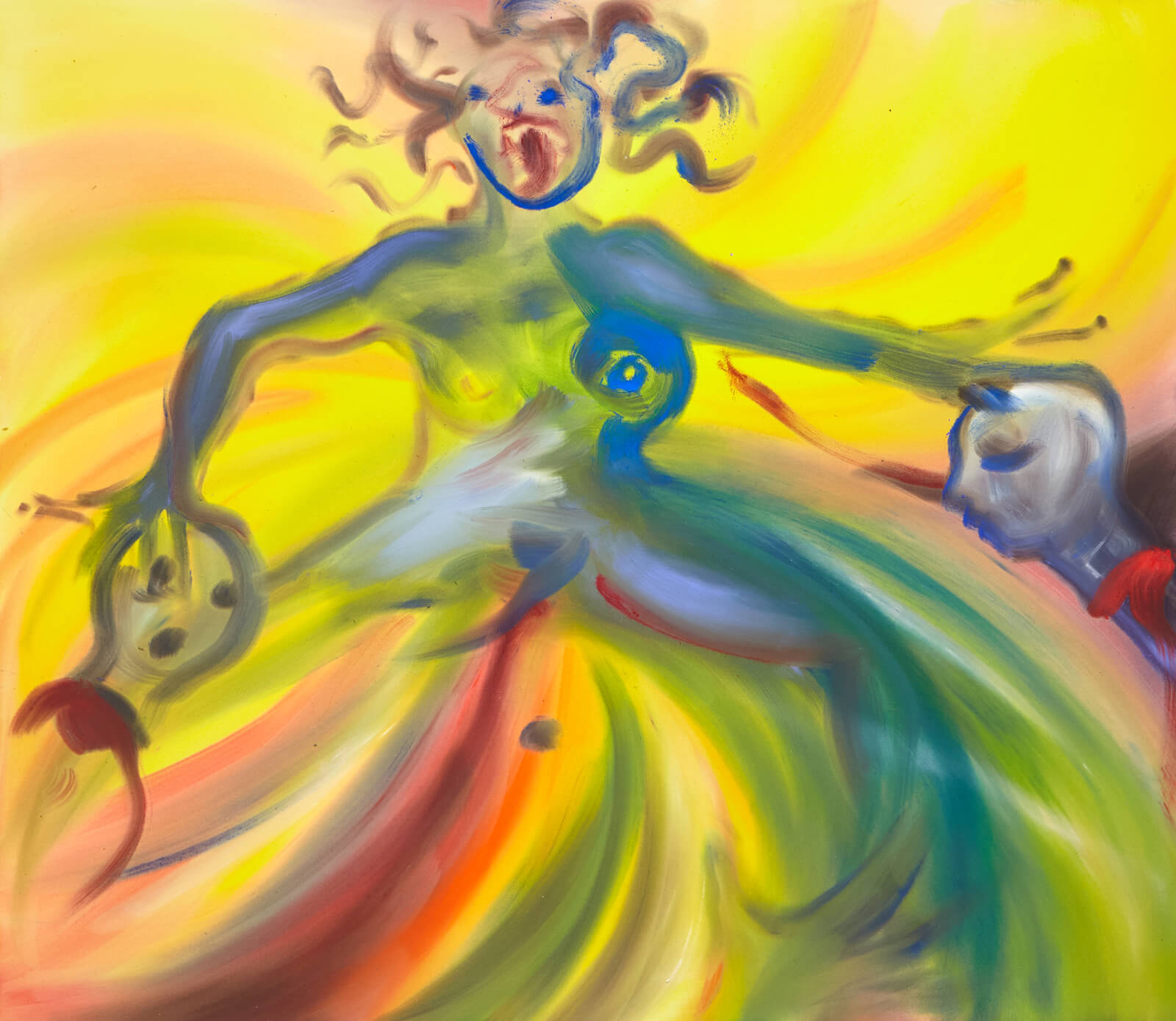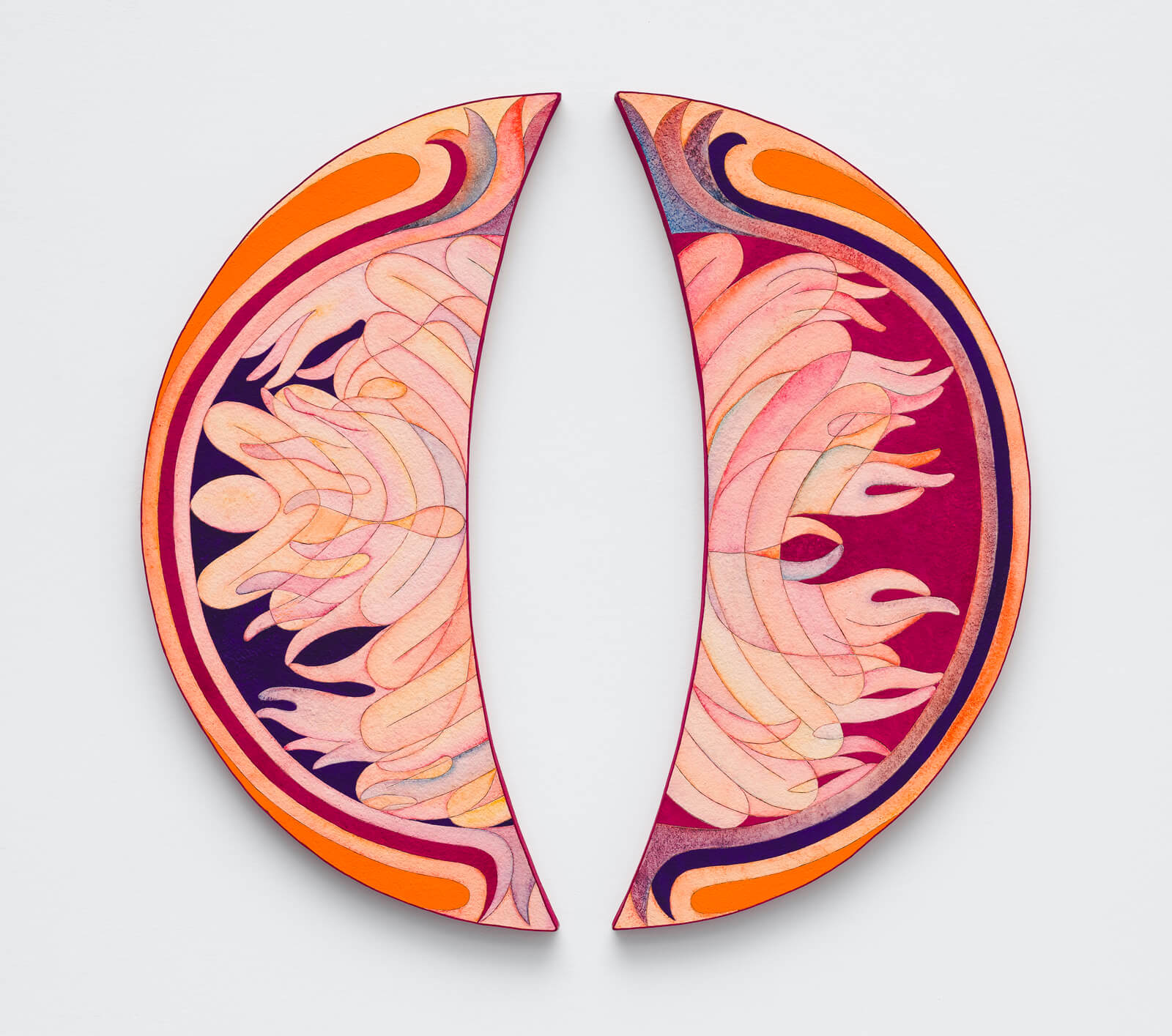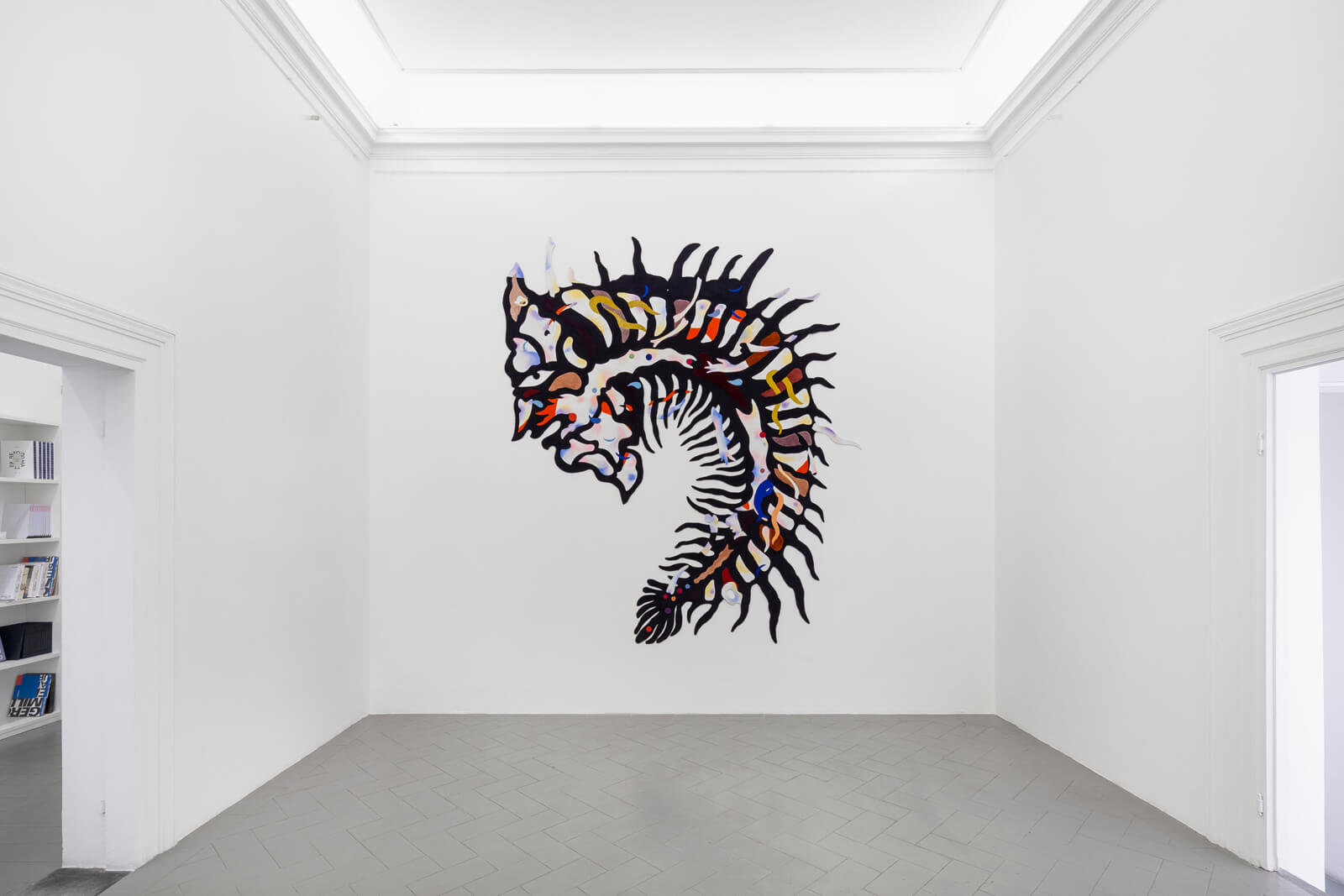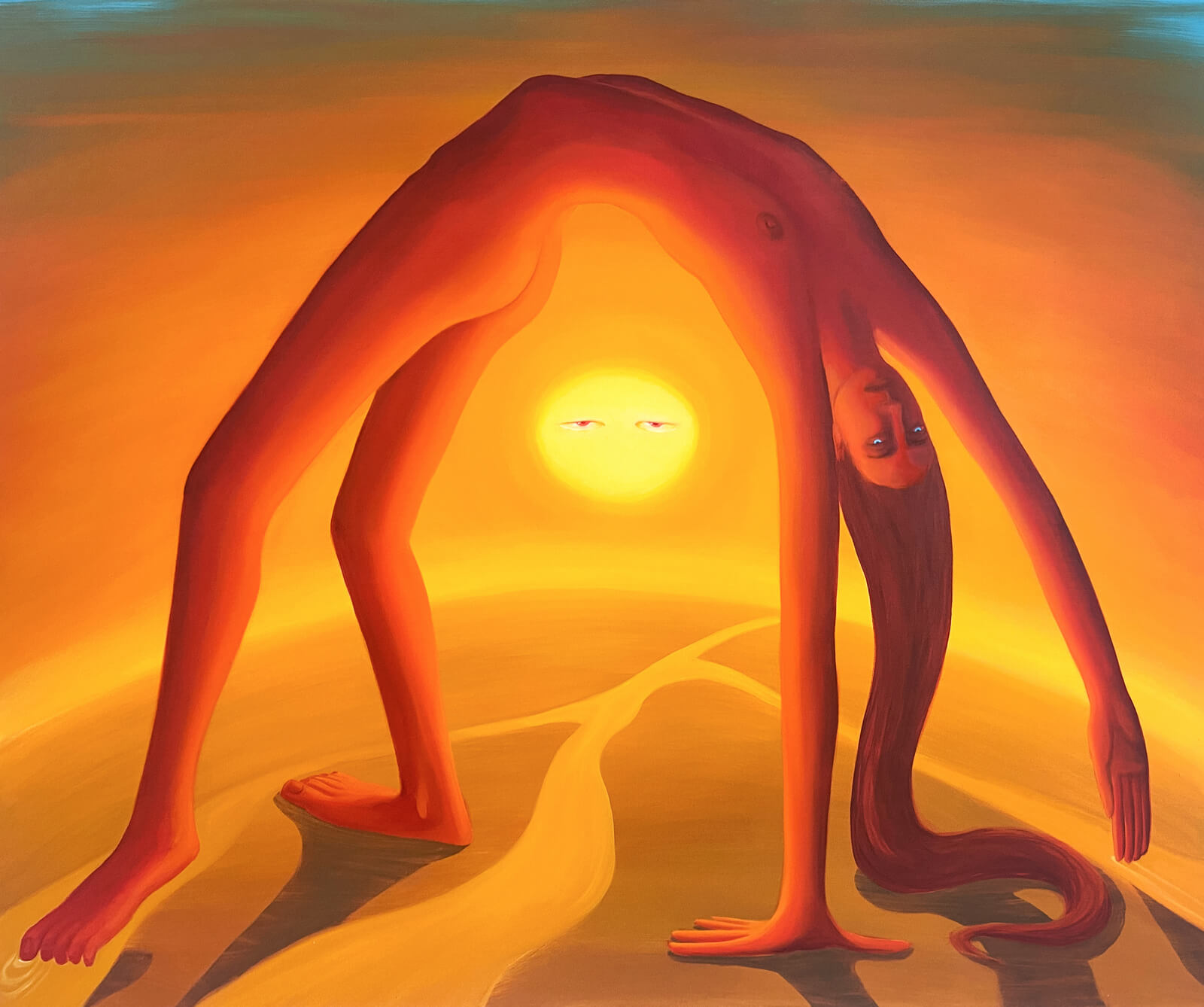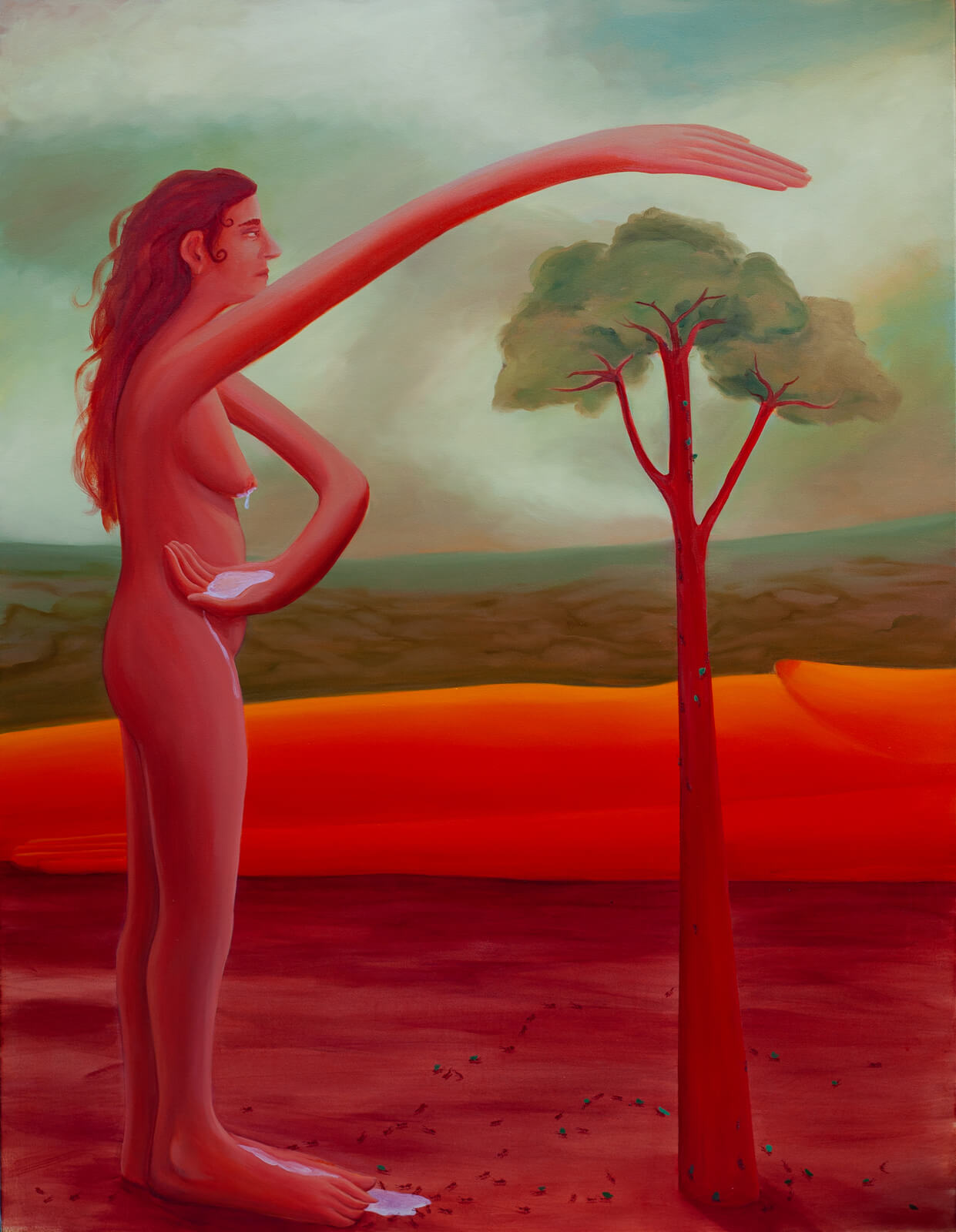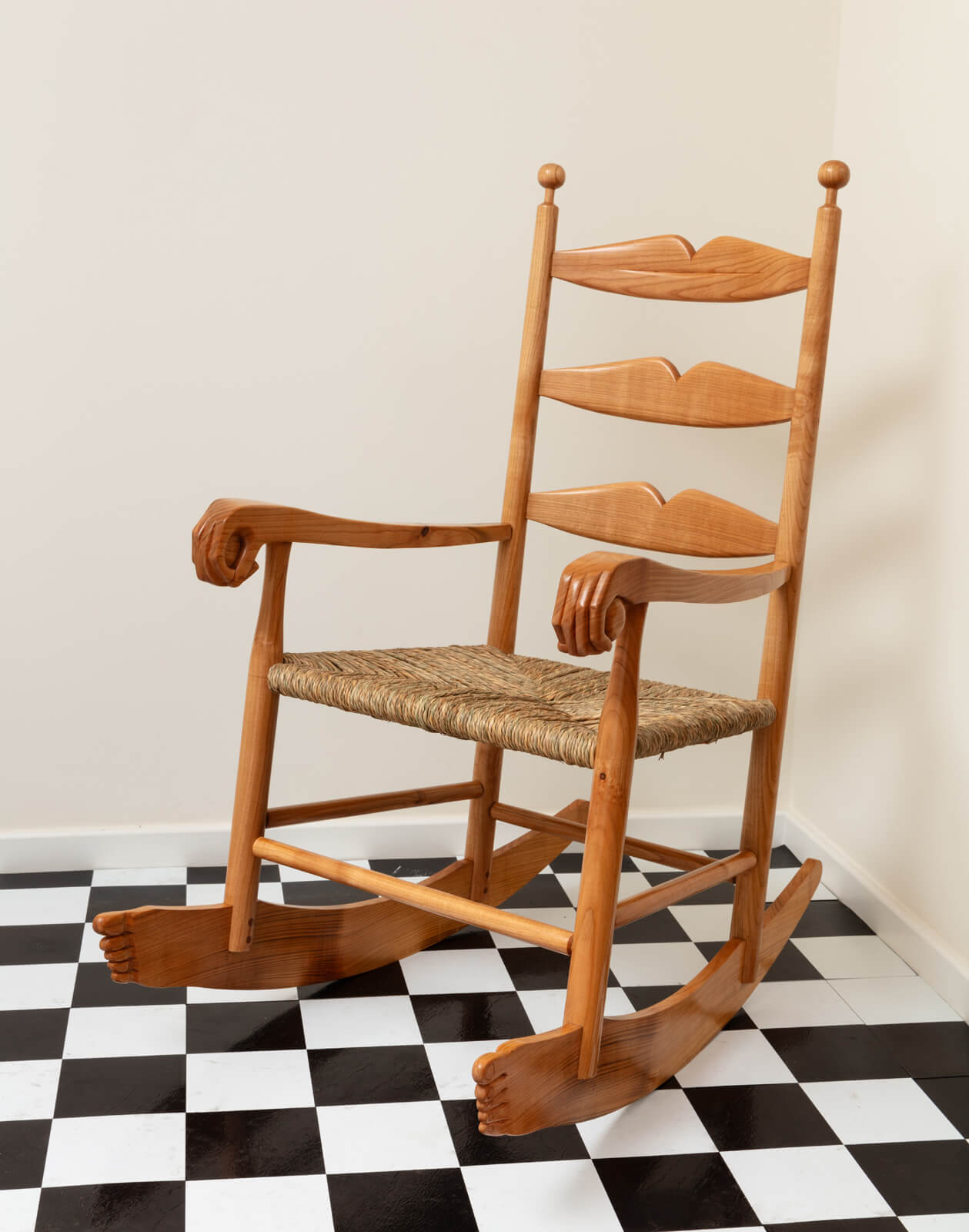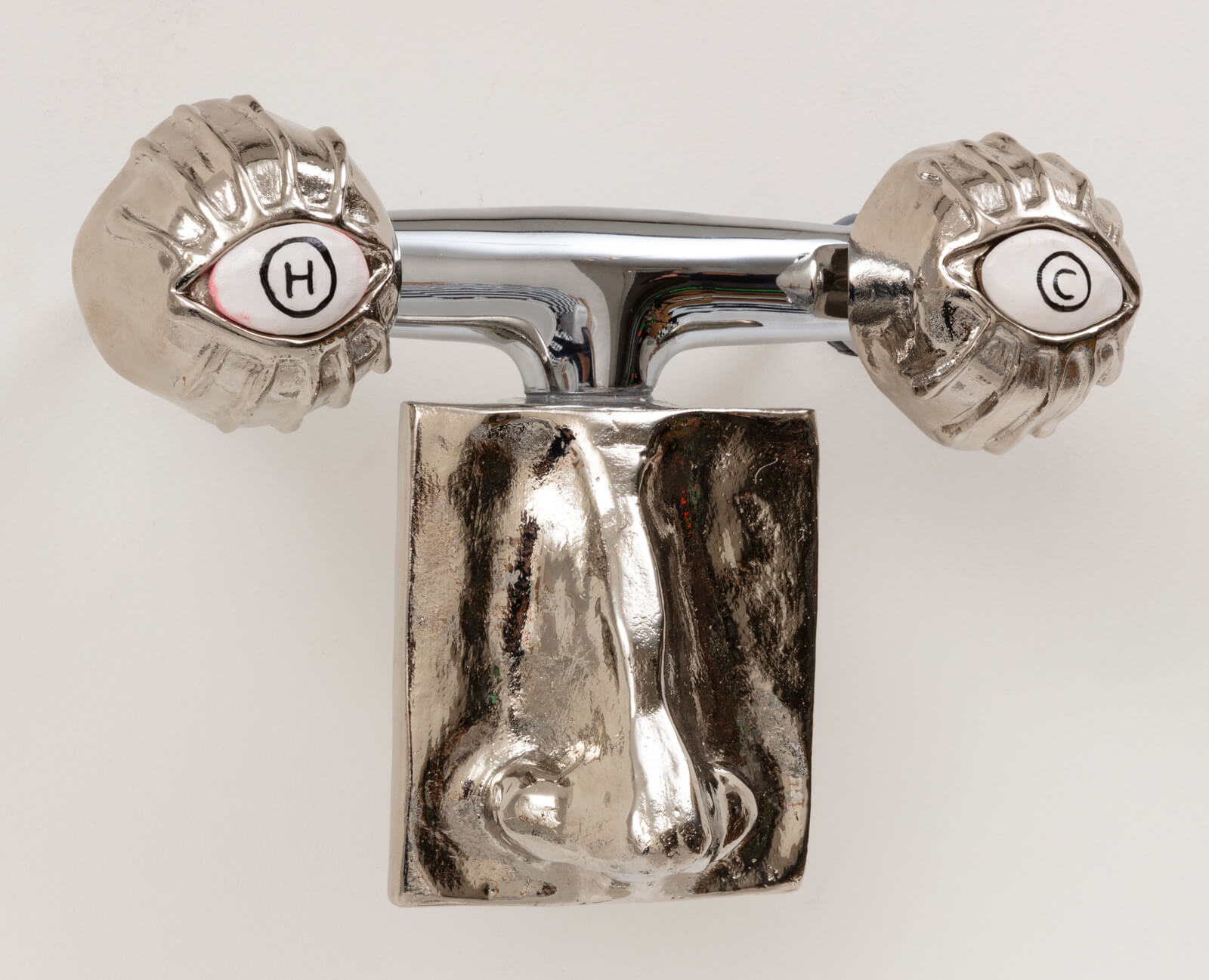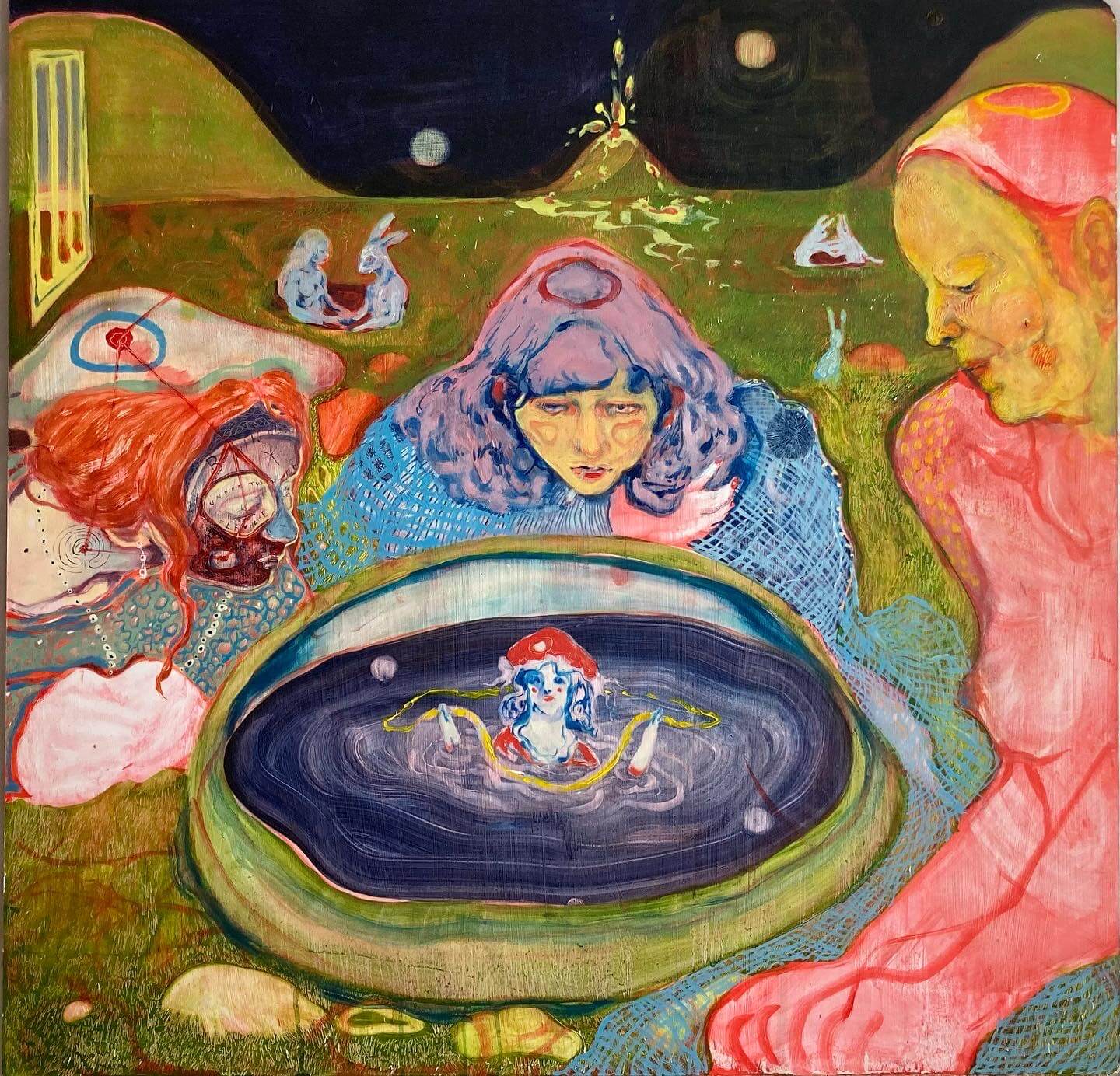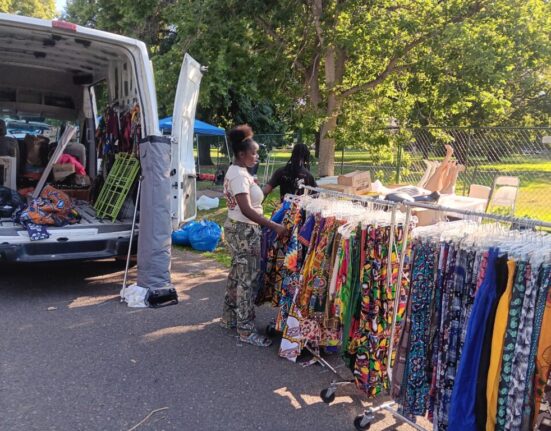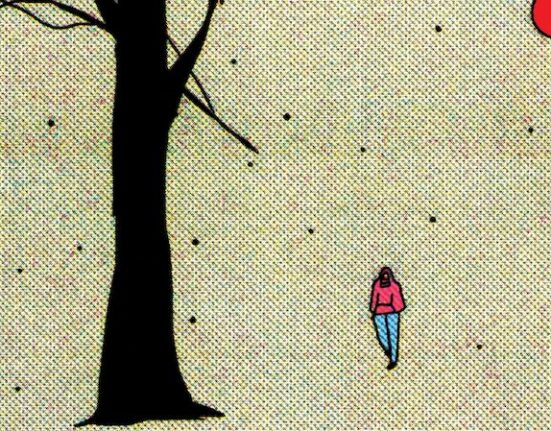The ongoing art exhibition Witchcraft and Surrealism at LAMB gallery in London is presenting 11 female artists inspired by Surrealism, an art movement exploring the relationship between the rational and unconscious mind and the unconventional and uncanny as sources of creative potential. Arising between the World Wars, Surrealism prioritised the ‘subconscious’ to effect change and transform the world, giving birth to the artist-magician archetype. Women artists who employed Surrealism in the last century transformed the connotations of women and the occult, rising against the mediaeval history of scapegoating women under the arch of witch-hunt.
The artists participating in Witchcraft and Surrealism include Alma Berrow, Bea Bonafini, Leonora Carrington, Harriet Gillett, Arianne Hughes, Tali Lennox, Paula Rego, Nooka Shepherd, Paula Turmina, Sophie von Hellermann and Georg Wilson. The art exhibition is an invitation into the evolution of the collective, feminine inner world over generations.
British artist Carrington’s Series of Witch Hats (c. 1955) transcend the interpretation of stereotypical, conical, mono-coloured black hats; Carrington’s hats, titled in French chapeaux, are colourful and reimagined through mythology. One of the works, Chapeau Sport – Deer Stalking, cites the British saying referring to the stealthy hunting of deers for vanity. Other artworks by Carrington include the Chapeau casque antique, a witch hat inscribed in Egyptian mythology, referring to an open, conical helmet with a nose guard, commonly used in the mediaeval period. These paintings were found within one of the portfolios of fellow Surrealist and Carrington’s longtime friend Leonor Fini. The works were born out of Fini’s 1952 commission to design a set of otherworldly hats and reflect the close friendship between the two artists and their shared fascination with witchcraft.
Sophie Van Hellermann’s contributions to the exhibition include apocalyptic paintings of the female deities Kali (2022) and Gaia (2022). Hellermann’s work focuses on destruction, consequence, and redemption through the female gaze. Gaia illustrates humans dancing around a burning planet as the Earth goddess watches the scene with tears dropping down. Similarly, Kali (2022), the Hindu goddess of destruction, is an icon of feminine power that challenges the notion that women must act solely as agents of creation. The work reveals a subversion of the feminine archetypes, questioning the boundaries between archetype ‘goddess’ and archetype’ witch’ blurred by traditional prerogatives.
Bonafini’s art installations, too, speak to the feminine archetype as an agent of life cycles. Her art installations span painting, sculpture, textiles, and ceramics, with textile-based installations acting as portals between the earthly and the otherworldly—a balance of the figurative and the abstract. Face of the Deep (2021) is a tapestry that gives an image to the depths of our subconscious, depicting the skeleton of a prehistoric fish crushed by the infinite pressure of the ocean floor. Bonafini’s Cosmic Fruit (2022) explores the labyrinth, which she interprets as a dichotomous portal of a lost spirituality and transcendental opening. These hand-cut, inlaid textile pieces are a cross between tapestries and carpets, powdered with pastels, with the artworks symbolising microcosms of new mythologies reimagined from the extinction on earth.
Conversely, Brazilian artist Turmina’s canvases Protection (2023), Shadow, (2023) and Satellized Rotation (2023) all depict a post-apocalyptic realm where humans appear to be on the verge of extinction. Her paintings explore a feminine anthropological history of the land, as the elongated figures merge with the ground on which they stand. Shades of red and crimson allude to surreal science fiction, with the Martian landscape and the bark of the Brazilwood tree addressing Brazil’s colonial history and the human tendency toward escapism despite the grounding reality.
The exhibition also presents works by Anna Berrow, whose installations Echo (2023) interpret and transform everyday objects, such as a rocking chair with a silhouette of human hands as the arms of the chair, or a faucet set with knobs that imitate features of the human face. These installations amplify the whim-craft, a soft feminine tendency that promotes the liberating idea of ‘play’.
Surrealism as a movement of art and literature rebels against societal conventions. The women protagonists of Surrealism such as Carrington and Fini, and Frida Kahlo, brought to attention longstanding historical biases of gender through a first-hand visual narration of otherworldliness, which in the mediaeval ages led to severe ostracisation and even death sentence. The emergence of Surrealism informed us of the human need to strive for an alignment in conceptions of “reality” and “idiosyncrasy”; Surrealism and Witchcraft seamlessly corresponds to this imperative.
The exhibition ‘Surrealism and Witchcraft’ is on view at Lamb Gallery until December 20, 2023.

